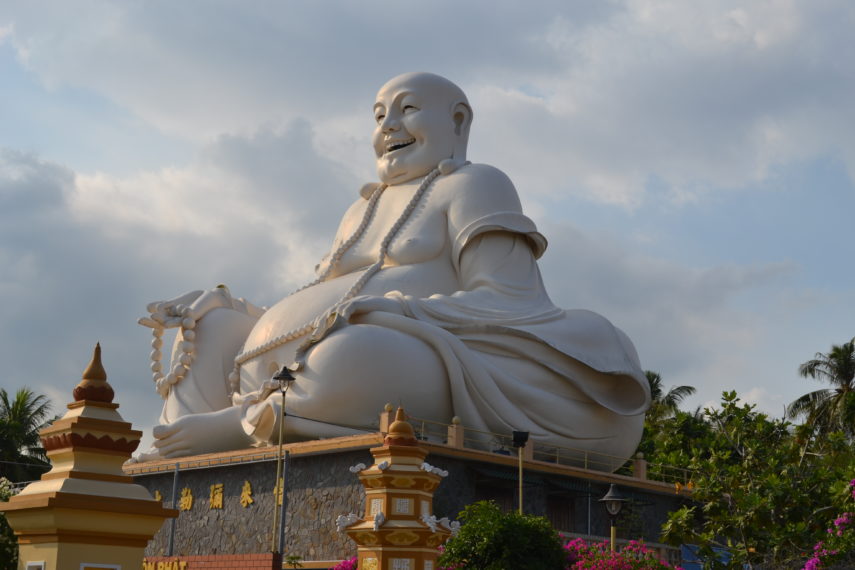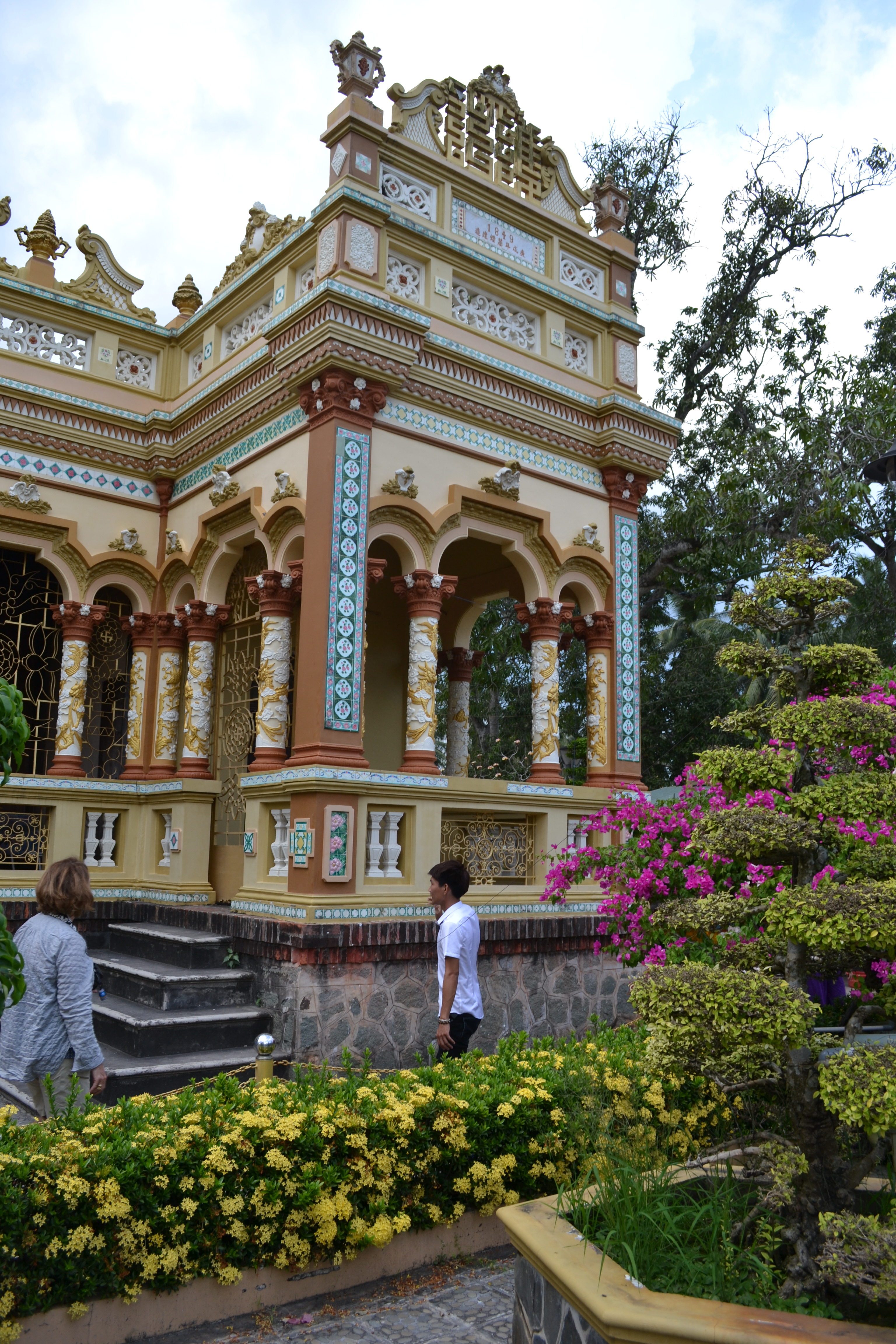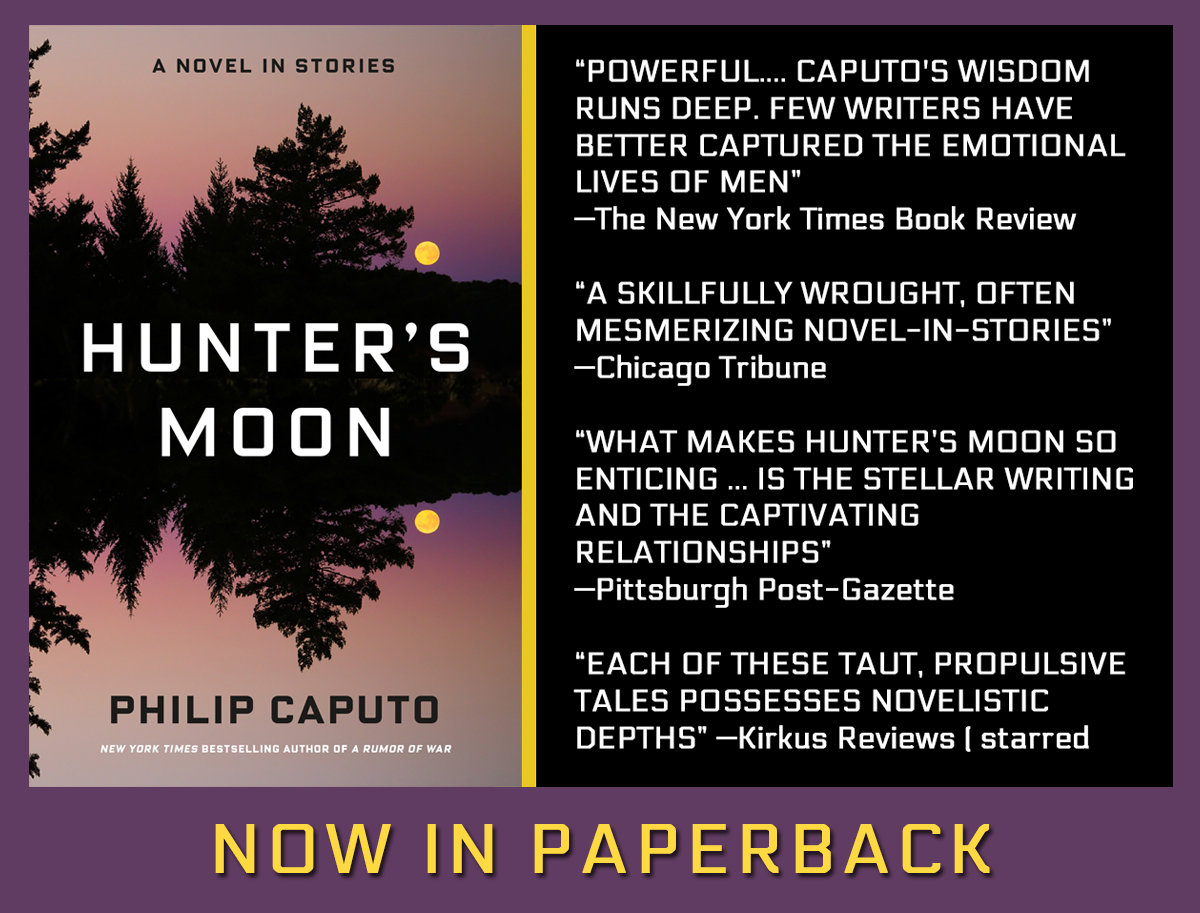“Many Vietnamese want to emigrate to the U.S.,” said the 30-something man named Thinh. He added, half-jokingly–that is, half-seriously: “If you adopt me I could emigrate to America without a visa.”
His comment was one indication that my initial impression of today’s Vietnam as a country marching toward a promising future was somewhat Pollyanna-ish. A deeper, grimmer look beneath the surface was presented at a lecture this morning by an American banker and expat who has lived in Saigon for years. Politically, he said, Vietnam is riddled with corruption in the private and public sectors of the economy, dominated by state-owned monopolies in steel, coal, airlines, telecommunications, and banking. The government has invested far too much in “white-elephant projects,” like steel plants that produce inferior steel, and is overly dependent on foreign firms to maintain a respectable rate of growth. These companies, mostly from South Korea, Japan, and Taiwan, account for 72 percent of Vietnam’s exports. The economy was doing well after a “renovation policy” replaced a draconian experiment in Mao-style Marxism, but truckloads of money went into stock-market speculation and dubious real estate ventures (sound familiar?).The 2008 financial crisis slammed on the brakes. More than 100,000 small, private enterprises went belly up, private banks lacked the liquidity to lend, while the aforementioned government companies were able to borrow from state-owned banks, encouraging further investment in white elephants. The result has been widespread income inequality. About two-thirds of Vietnam’s 92 million people live in the countryside, where farmers earn, on average, $20 a month. Industrial workers take home around $150, and office employees of foreign firms (who account for a mere 7 percent of the workforce) earn anywhere from $500 to $1,000 monthly.
And that’s not all, our speaker went on. Abroad, there are rising tensions with China over disputed claims to islands in the South China Sea. On the domestic front, towns and cities are choking on polluted air; the damming of the Mekong River has deprived half a million homes in the Mekong Delta of fresh water, freedom of the press is nonexistent (when unfavorable news appears on TV, the screen goes suddenly blank, flashing a message that the station is experiencing technical difficulties). Firewalls blockade the Internet, and private property is unknown (the government owns all the land, which it then leases to private citizens). “There’s a new boom in real estate,” he said. “And a new bust is coming.”
As if to sprinkle a little color into this somber picture, he added that Vietnam is doing better than Laos or Cambodia but not as well as Thailand.
After that glimpse into the dark side, some of us felt in need of an anti-depressant.
My own mood was buoyed by the 2-hour bus ride to My Tho, a Mekong Delta town where we would board our ship, the Jahan. I had made this drive by jeep in 1975. The road at that time was a narrow blacktop passing through war-ravaged villages. Now it was a four-lane superhighway, with concrete bridges soaring over canals and river tributaries. Traffic was rush-hour dense, a river in itself composed of the ubiquitous motor bikes and scooters. I couldn’t help but compare what I saw now to what I’d seen more than forty years before, and to respond to the progress like a Vietnamese: Hey, this is okay If so many people could afford all those Hondas and Kawasakis, and ride them over a four-lane divided highway, then maybe things weren’t as bleak as our morning speaker had painted them.
We made a brief rest stop at the Vinh Trang pagoda, an elaborate Buddhist temple, its gold-leafed pillars and roof shining in the sun. A giant concrete statue of the Happy Buddha, smiling and pot-bellied, overlooked the shrine. Mr. Tam, our guide for the day, told us that there is freedom of religion in Vietnam, with one caveat: if your national ID card identifies you as practicing a particular faith, you can’t land a government job. Apparently, only atheists, agnostics, and the non-denominational need apply.
Tam also told us a story illustrating that the sorrows and tragedy of war are best written not in epic poetry but in the haikus of single lives lost. Tam, now deep into middle age, was born near Hanoi, one of ten children. When he was 18 months old, and North Vietnam under relentless U.S. bombing, his family spent hours of each day and night, sometimes entire days and nights, huddled in their air-raid shelter. It wasn’t much more than a deep hole in the ground covered by dirt and logs. In the stale air of that crowded space, one of his brothers developed bronchitis. It grew worse as the days wore on, but his parents were too afraid to take him to a hospital. The boy died. in between B-52 raids, his mother and aunt rushed out to a field and hastily buried him. Later, after the U.S. had ceased the bombing campaign, the family searched for the body to give it a proper burial, but Tam’s mother and aunt could not remember where they had dug the grave. In Vietnamese culture, it is very important to know where your ancestors and family members are interred so the correct rituals can be performed, lest their spirits become “wandering souls” and haunt the living. Years later, when the war was over, the boy’s grandmother consulted a medium to make contact with her lost grandson. He appeared to her one night, and assured her he was all right; but in her joy to see and speak to him, she forgot to ask where he’d been buried. To this day, no one in Tam’s family knows the location of his brother’s grave. He remains a wandering soul. Thus ended Tam’s story of one more unsung casualty of war.
It lingered in my mind as we pulled up to a dock on the broad, sand-brown Mekong, where the Jahan was moored. A white-hulled ship built in 2004 along classic lines, with brass fixtures and antique phones in the spacious staterooms, she looked like a vessel out of Joseph Conrad’s day. Tonight, she would begin her voyage upriver into Cambodia, where the 1,000-year-old temples of a vanished civilization rise out of the jungle.
Below: The Vinh Trang Pagoda, My Tho, Vietnam

The Laughing Buddha, Vinh Trang Pagoda. Pagoda on the right.




Mr. Caputo, is it just me or does the laughing Buddha look a lot like Vladimir Lenin?
I cannot think of a single photo of Lenin that shows him smiling, much less laughing.